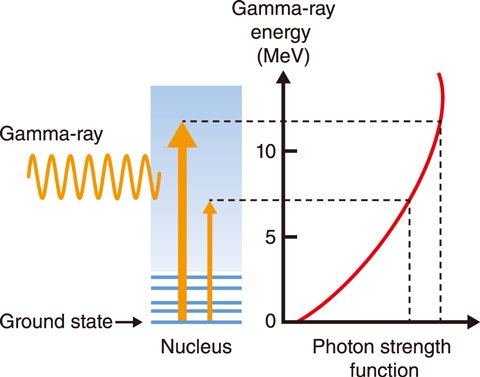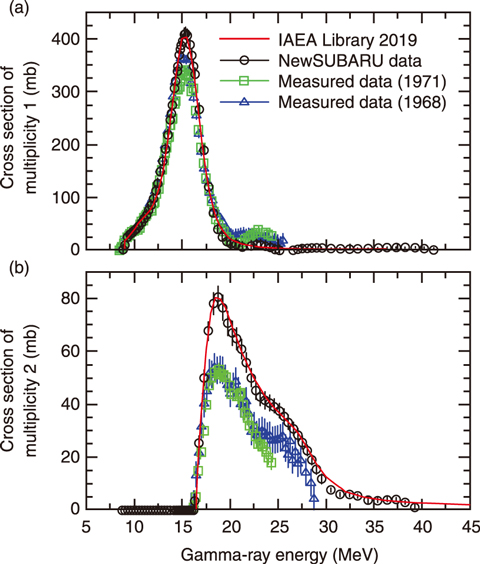
Fig.4-2 Relationship between the gamma-ray absorption of a nucleus and the photon strength function

Fig.4-3 Cross sections of 139La with different neutron multiplicities
Photonuclear reactions are the phenomenon that occur when a nucleus is irradiated with high-energy gamma-rays. Photonuclear database is one of the fundamental libraries for scientific researches as well as practical applications. Nevertheless, large discrepancies are present between the cross sections measured at different facilities by groups which led photonuclear researches from the 1960s to the 1980s. These discrepancies make uncertainty in, for example, the amount of radioactive waste present in the decommissioning of electron accelerator facilities. As a result, the radioactive wastes increase due to taking larger margin in waste disposal. Therefore, the International Atomic Energy Agency (IAEA) began a coordinated research project to develop an improved-reliability photonuclear data library in 2016; researchers from 15 countries participated.
From extensive application viewpoints, photonuclear data are required to cover wide gamma-ray energy and nuclide ranges. As these requirements cannot be satisfied by experiments only, a nuclear reaction model is vital. Thus, the nuclear reaction model code CCONE developed by JAEA was used to help develop this database; four up-to-date photon strength function models were installed in it (Fig.4-2). By applying these photon strength functions to cross section calculations, the photon strength function model showing the best performance was selected, based on the comparison of calculated cross sections with measured data for many nuclides and wide energy ranges.
The evaluation of 140 nuclides from chlorine (atomic number Z = 17) to plutonium (Z = 94) was then performed in the gamma-ray energy range of 1 to 200 MeV. Photonuclear data such as photo-absorption, photo-neutron, and fission cross sections were derived. In particular, the photo-neutron cross sections were carefully improved in the giant dipole resonance region (10 to 20 MeV), where the cross sections are large. This improvement leads to the increase of practicality to many fields.
To demonstrate the updates made to the library, a comparison of the evaluated photo-neutron cross sections for Lanthanum-139 (139La) for multiplicities 1 and 2 is shown in Fig.4-3. The calculated data are in good agreement with those submitted by the collaborating experimental groups; further, the amount of neutrons emitted by photonuclear reactions was shown to be larger than previously considered.
The developed photonuclear data library includes the nuclear data of 219 nuclides from deuterium (2H) to 241Pu, of which the nuclear data for 140 new and 7 existing nuclides were provided by JAEA. This is remarkable contribution to the database development.
The resulting improved and more reliable photonuclear database is expected to contribute to a reduction in the radioactive waste associated with decommissioning electron accelerator facilities, and to the optimization of gamma-ray irradiation used in radiation therapy for human subjects.
(Nobuyuki Iwamoto)
<Previous: 4 Nuclear Science and Engineering Research | Next: 4-2>